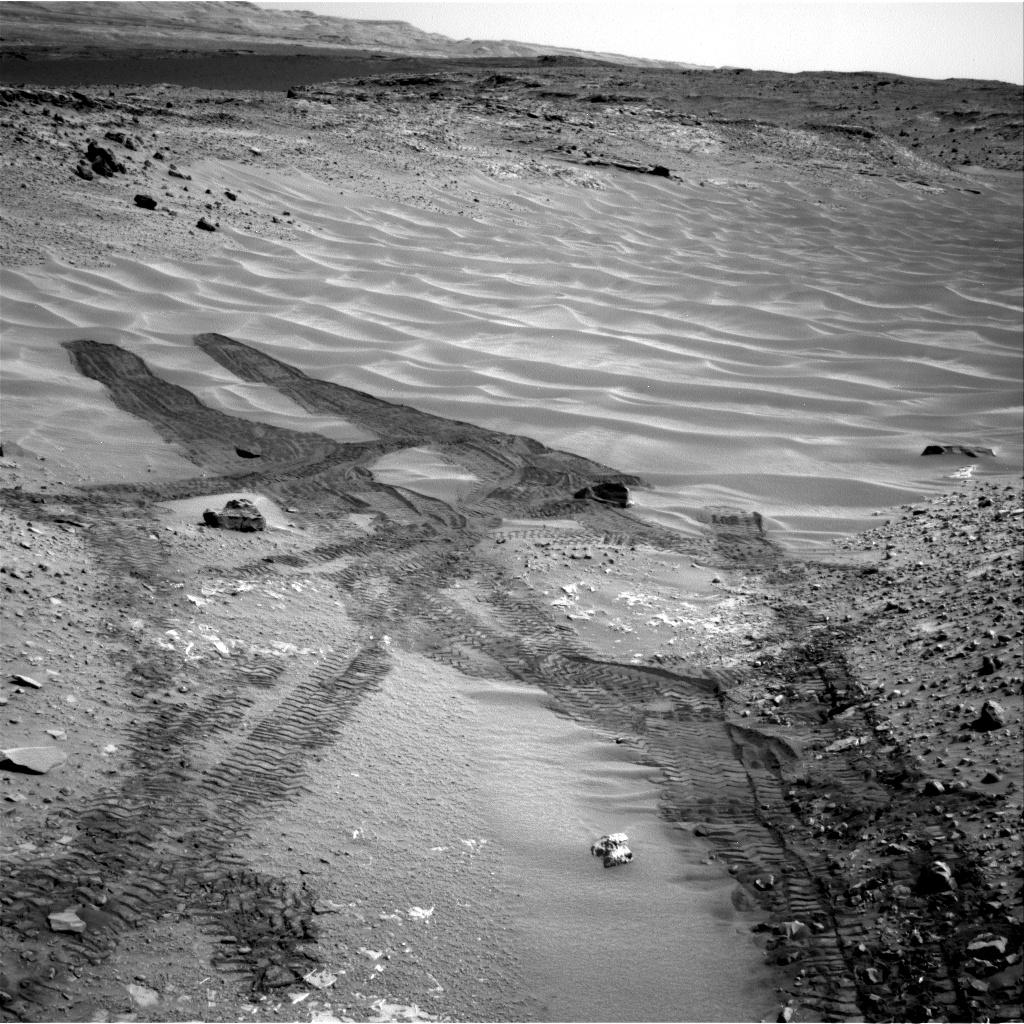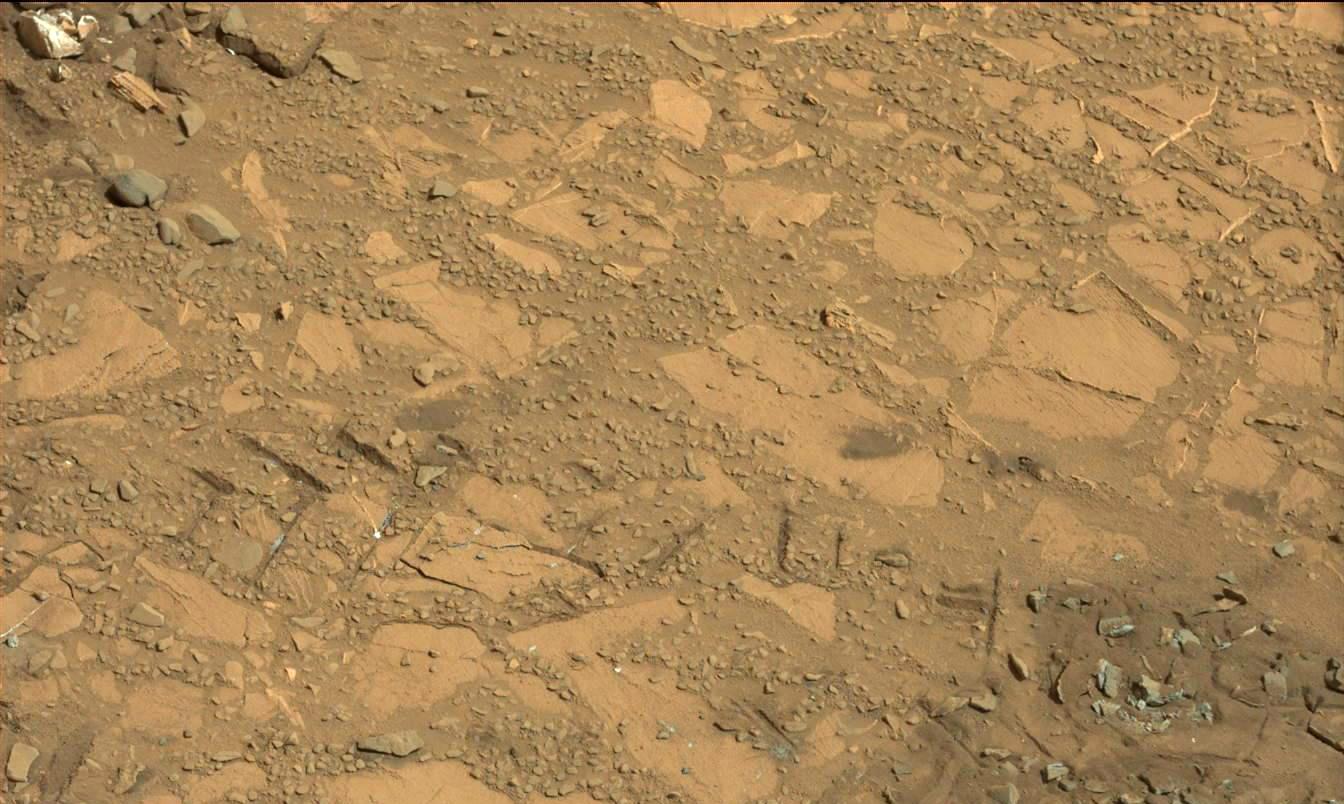
NASA's Mars rover Curiosity may have to choose a new route to the base of a huge Red Planet mountain.
The 1-ton Curiosity rover had been heading for Mount Sharp — a 3.4-mile-high (5.5 kilometers) mountain in the center of Mars' Gale Crater — via "Hidden Valley," a sandy swale that's about the length of a football field. But Curiosity turned back shortly after entering the valley's northeastern end earlier this month, finding the sand surprisingly slippery, NASA officials said.
"We need to gain a better understanding of the interaction between the wheels and Martian sand ripples, and Hidden Valley is not a good location for experimenting," Curiosity project manager Jim Erickson, of NASA's Jet Propulsion Laboratory (JPL) in Pasadena, California, said in a statement. [Mars Rover Curiosity's Latest Amazing Photos]

There is no way out of Hidden Valley save exits at its northeastern and southwestern ends, NASA officials said. The mission team is now assessing possible alternative routes that would take Curiosity north of the valley.
The goal is to get Curiosity to Mount Sharp, which has been the rover's ultimate science destination since before its August 2012 touchdown. Mission scientists want the six-wheeled robot to climb up through the mountain's foothills, reading a history in the rocks of Mars' transition from a warm and wet planet in the ancient past to the cold, dry world we know today.
The chief goal of the $2.5 billion Curiosity mission is to determine if the Red Planet could ever have supported microbial life. The team has already checked off this goal, finding that an area near Curiosity's landing site called Yellowknife Bay was a habitable lake-and-stream system billions of years ago.
Researchers came to this conclusion last year after analyzing samples Curiosity drilled from two different rocks in Yellowknife Bay.
Get the Space.com Newsletter
Breaking space news, the latest updates on rocket launches, skywatching events and more!
Curiosity departed Yellowknife Bay in July 2013, embarking on the long drive to Mount Sharp. The rover drilled another rock sample along the way in May of this year, and it's now sizing up a fourth potential drilling target, mission officials said.
That rock, known as "Bonanza King," lies at the northeastern end of Hidden Valley. Studying Bonanza King could help the mission team better understand the geological context of Gale Crater, officials said.
"This rock has an appearance quite different from the sandstones we've been driving through for several months," said Curiosity deputy project scientist Ashwin Vasavada of JPL. "The landscape is changing, and that's worth checking out."

The epic drive has been complicated and prolonged somewhat by unexpected wheel damage, which Curiosity began to accrue late last year. The rover's operators adjusted Curiosity's route in an attempt to avoid hard, sharp rocks and have driven the rover backward part of the way. These strategies have helped get the problem under control, mission team members said.
Follow Mike Wall on Twitter @michaeldwall and Google+. Follow us @Spacedotcom, Facebook or Google+. Originally published on Space.com.
Join our Space Forums to keep talking space on the latest missions, night sky and more! And if you have a news tip, correction or comment, let us know at: community@space.com.

Michael Wall is a Senior Space Writer with Space.com and joined the team in 2010. He primarily covers exoplanets, spaceflight and military space, but has been known to dabble in the space art beat. His book about the search for alien life, "Out There," was published on Nov. 13, 2018. Before becoming a science writer, Michael worked as a herpetologist and wildlife biologist. He has a Ph.D. in evolutionary biology from the University of Sydney, Australia, a bachelor's degree from the University of Arizona, and a graduate certificate in science writing from the University of California, Santa Cruz. To find out what his latest project is, you can follow Michael on Twitter.










